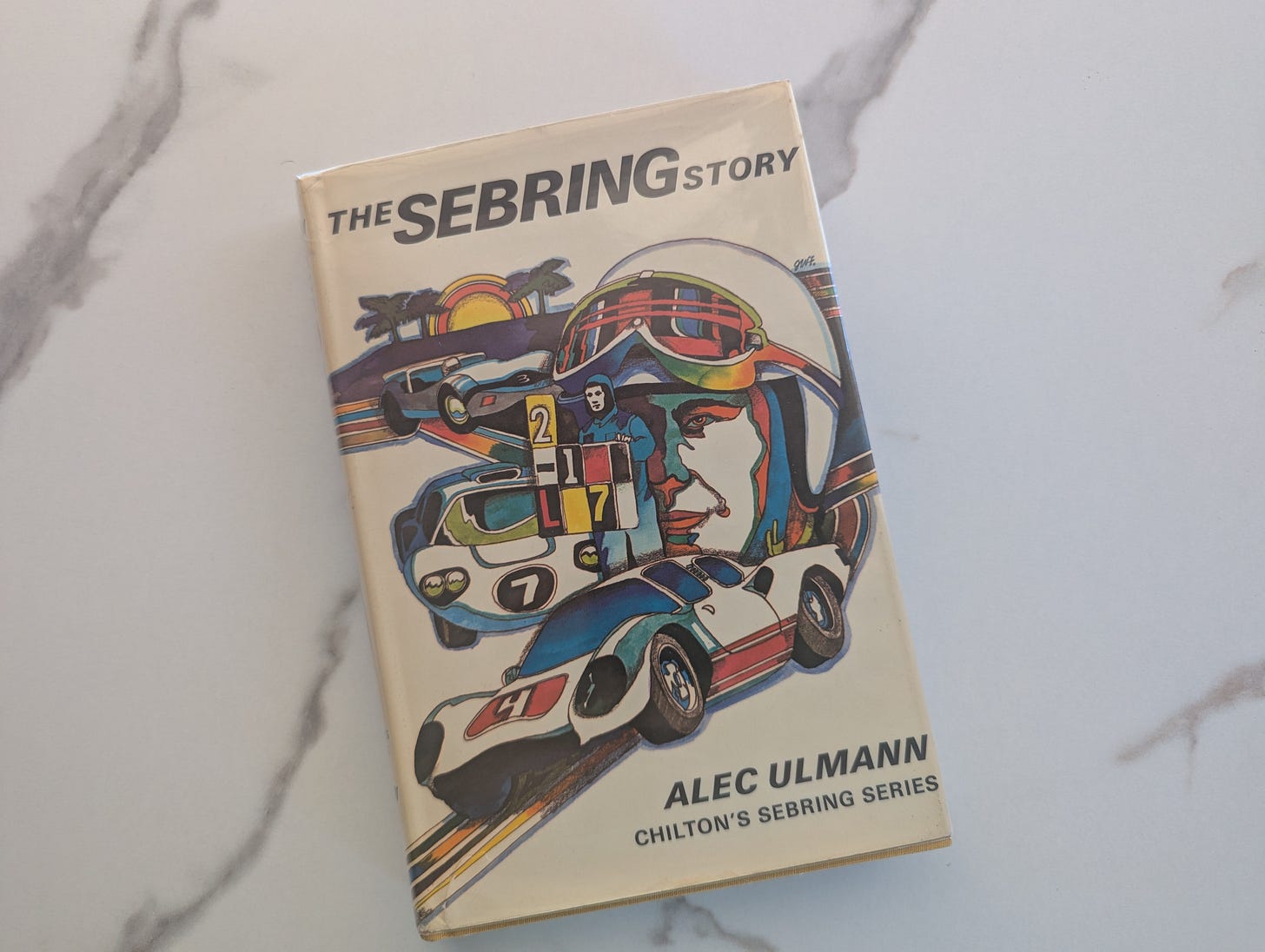Book Club: “The Sebring Story” and motorsport's painful lack of narrative
Motorsport doesn't understand how to tell its own stories
Are you ever extremely excited to read a book that you've been dying to get your hands on, only to end up wildly disappointed about the whole thing actually kind of… sucks? Because apparently no one is capable of figuring out a compelling way to tell some of the most interesting stories in sporting history? That just about sums up my experience reading The Sebring Story by Alec Ulmann.
Welcome to DPTJ Book Club! Each month, we're reading one or two books about motorsport with an eye to discussing the growth and evolution of storytelling, drama, and factual accuracy in published racing narratives. This month, we read The Sebring Story by Alec Ulmann.
If you weren't able to get your hands on a copy of this (long since out-of-date) book, let me sum up The Sebring Story in brief: In it, promoter Alec Ulmann personally recounts the formation of Sebring Raceway, one of America's first permanent race tracks built within the confines of a defunct airbase.
DPTJ listeners will recognize Sebring's historical importance to American motorsport, since we touched on it in a few different episodes (Death at Watkins Glen: How One Forgotten Crash Changed Motorsport Forever and SCCA vs. AAA: The Battle Between Sanctioning Bodies that Almost KILLED Racing In America). To very, very briefly sum up those two episodes: Most racing in America after World War II was dedicated to emulating a European style of sports car racing that took place on public roads; unlike European racing, the SCCA really wanted American motorsport to remain an amateur sport for rich dudes who just kinda liked driving their fancy cars really fast.
Keep reading with a 7-day free trial
Subscribe to Deadly Passions, Terrible Joys to keep reading this post and get 7 days of free access to the full post archives.




